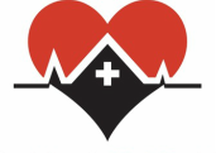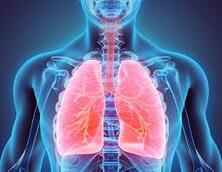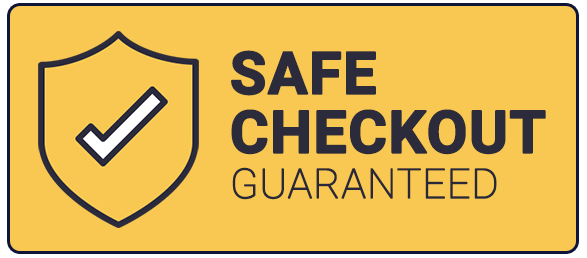Is CPR Needed For Respiratory Arrest?So you've determined that a patient or victim is unconscious but they have a heart rate and they are breathing on their own. How do you know if it is cardiac arrest of respiratory arrest? Respiratory arrest is a life-threatening situation in which immediate intervention is needed. However time is critical so it is essential to understand the type of arrest the patient is experiencing and begin treatment as soon as possible. Let's look at what respiratory arrest is and causes and possible treatment. Additionally, an early assessment and recognition intervention is important. Further, knowledge and participation of CPR/AED/First Aid training will equip you with the answers to these questions. What is Respiratory Arrest?Respiratory arrest occurs when a patient has stopped breathing. During respiratory arrest, the body is no longer getting oxygen to the brain, heart, and other vital organs. Cardiac arrest almost always follows unless respiratory function is rapidly restored. Occasionally, the patient will have already been experiencing respiratory distress that has gone unidentified or untreated, ultimately developing into respiratory arrest. What Causes respiratory Arrest?A patient may experience respiratory arrest when the nerves and muscles cannot support respiration. There are many potential causes of this, including: 1. COVID-19 2. Head, chest or other major injury 3. Drug overdose 4. Sepsis 5. Neuromuscular diseases such as ALS 6. Stroke 7. Pneumonia What Is The Difference Between respiratory arrest and cardiac arrest?Sometimes, respiratory arrest can lead to cardiac arrest, and other times the two can occur at the same time. In both respiratory and cardiac arrest, the patient will be unconscious and will not be breathing. However, the difference between cardiac and respiratory arrest is that in cases of respiratory arrest, the patient will have a detectable pulse as the heart is still functioning and pumping blood throughout the body. Sudden cardiac arrest (SCA) is when a patient is experiencing an electrical disturbance in the heart, which will interrupt the heart’s rhythm and potentially halt heart function, breathing, and consciousness. Blood flow will stop, and so during sudden cardiac arrest, the patient will not have a strong pulse. How Do You Treat A person in Respiratory arrest?The first responder should assess the emergency and begin an intervention once respiratory arrest is identified. Treatment should focu on supporting the patient while the lungs heal. The goal of supportive care is getting enough oxygen into the blood and delivered to your body to prevent damage and removing the injury that caused Acute Respiratory Distress Syndrome (ARDS) to develop. Instead of administering CPR, you’ll want to follow basic life support (BLS) practices. The following are some of the steps that can be taken to help manage respiratory arrest: 1. Open the airway 2. Apply bag-mask ventilation 3. Prepare for an advanced airway 4. Use the head tilt/chin lift maneuver if there is no cervical spine injury 5. Use the jaw thrust maneuver if there is a potential injury to the cervical spine 6. Check that you are providing sufficient oxygenation 7. Avoid over-ventilation 8. Monitor the pulse for any signs of cardiac arrest Get your BLS Certification With Help-A-Heart CPR!Any healthcare professional or laymen rescuer who might encounter a cardiovascular emergency at home or at their place of employment should participate in a BLS Provider certification with Help-A-Heart CPR. The expert team here at Help-A-Heart CPR can help answer any questions you may have––because we’ve been out on the field treating respiratory arrest and more as EMTs, paramedics, and nurses ourselves.
Comments
|
AuthorDr. Tracy A. Jones is the CEO of Help-A-Heart CPR, LLC and an American Heart Association, ASHI, and American Red Cross Master Program Trainer, Instructor, & AHA Faculty Member located in San Antonio, Texas. Archives
June 2024
Categories |
Help-A-Heart CPR, LLC | 1747 Citadell Plaza Suite 101 | San Antonio, Texas 78209 | (210) 380-5344 | [email protected]
Copyright © Help-A-Heart CPR, LLC 2024
100% Certification Acceptance
We promise your employer, school, or agency will accept the certification card we issue to you. If there is a question of acceptance or validity, simply send us an email at [email protected] with full details. We will reach out to the individual/entity and provide accreditation information. If still there’s a question, we will provide you with a full refund of your class fee. It’s that simple.
We promise your employer, school, or agency will accept the certification card we issue to you. If there is a question of acceptance or validity, simply send us an email at [email protected] with full details. We will reach out to the individual/entity and provide accreditation information. If still there’s a question, we will provide you with a full refund of your class fee. It’s that simple.
|
Communities Served
ALABAMA: Birmingham
ARKANSAS: Fayetteville, Hot Springs, Jonesboro, Little Rock NEW MEXICO: Albuquerque TENNESSEE: Knoxville TEXAS: Amarillo, Arlington, Austin, Bandera, Bastrop, Boerne, Brownsville, Comfort, Converse, Corpus Christi, Dallas/Ft. Worth, Del Rio, Dripping Springs, El Paso, Floresville, Fredericksburg, Georgetown, Harlingen, Houston, Junction, Katy, Kerrville, Kingsville, Kingwood, Laredo, Lubbock, Lufkin, McAllen, Midland, New Braunfels, Odessa, Pleasanton, Round Rock, San Angelo, San Marcos, Schertz, Seguin, Taylor, Temple, Texarkana, Tyler, Universal City, Victoria, Waco, The Woodlands |
Why Choose Help-A-Heart CPR?
1. Flexible Scheduling
2. On and Off Location Training Available 3. Casual, Fun Atmosphere 4. Best Price Guarantee 5. All Instructors are AHA and/or ARC certified 6. 5 Star Google Reviews 7. Blended Learning (Online & Skills Check) Available 8. Meets OSHA & College CPR Requirements 9. Get Certified Within 3-4 Hours 10.Certification Is Good For Two Years 11. Official AHA/ARC/ASHI Training Site 12. High Quality Safety Training! |








